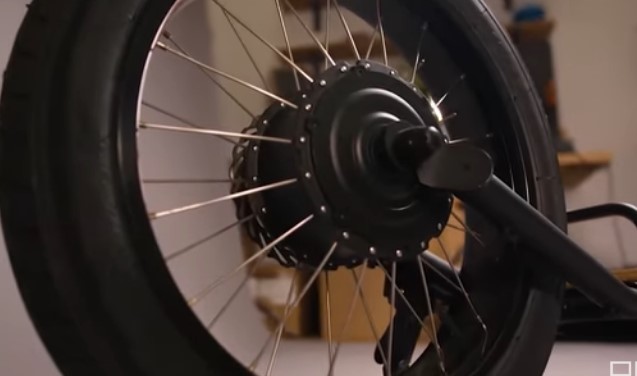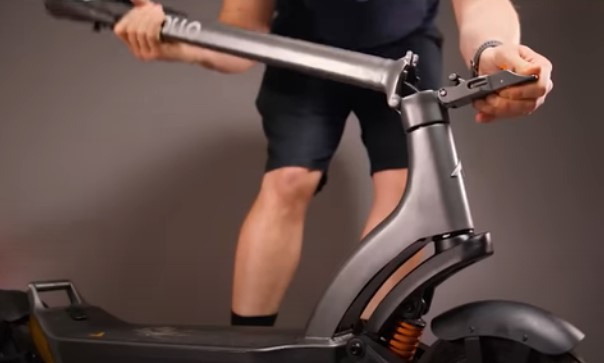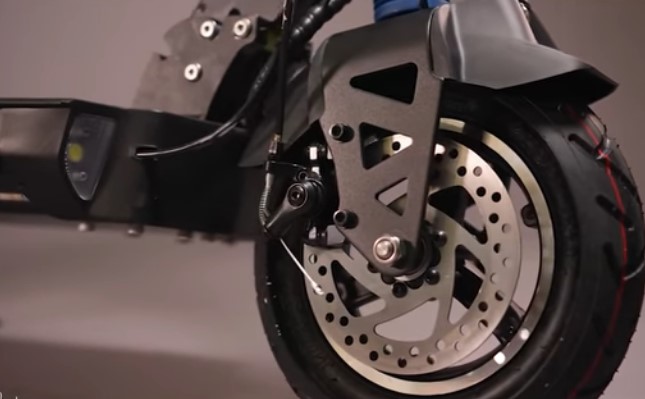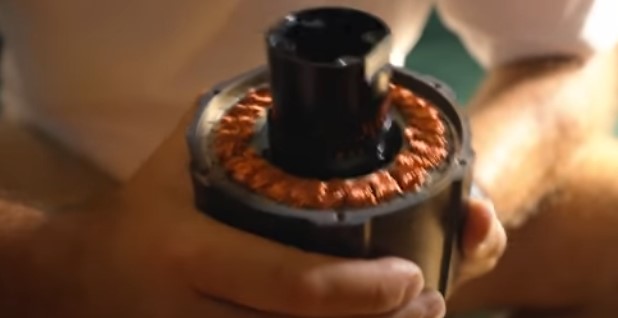Electric scooter motors are the core component that powers electric scooters, providing the necessary energy for mobility and speed. Electric scooters have gained popularity as an eco-friendly alternative to traditional gasoline-powered vehicles.
Electric scooter motors come in various types, including hub motors and belt-driven motors. Hub motors are integrated into the scooter’s wheels, offering a compact design and efficient power transfer. On the other hand, belt-driven motors utilize a belt and pulley system to transfer energy from the motor to the wheels, providing a smooth and quiet ride.
We will explore the different types of electric scooter motors, their advantages and disadvantages, and important factors to consider when choosing a motor for your electric scooter. So, let’s dive into the world of electric scooter motors and discover what makes them such a vital component in these modern-day vehicles.
Different Types Of Electric Scooter Motors

Electric scooter motors come in different types: brushed motors and brushless motors. Both have their own advantages and disadvantages. Brushed motors, for instance, are cost-effective and simpler in design, but they tend to require more maintenance due to their brushes wearing out.
On the other hand, brushless motors are more efficient, have a longer lifespan, and require less maintenance. They utilize magnets instead of brushes, which eliminates the need for regular replacements. Brushless motors are also quieter and provide a smoother ride.
However, they are generally more expensive than brushed motors. When choosing an electric scooter, it’s important to consider the motor type that suits your needs, budget, and desired performance. Each motor type offers unique characteristics that can significantly impact your riding experience.
Factors To Consider When Selecting An Electric Scooter Motor
Factors to consider when selecting an electric scooter motor include power and torque requirements, efficiency and range, as well as motor size and weight. The power and torque of the motor determine the scooter’s performance and ability to climb hills.
Efficiency and range are crucial factors that impact the scooter’s battery life and overall mileage. It’s important to choose a motor that offers good efficiency and provides a sufficient range for your needs. Additionally, the motor size and weight can affect the scooter’s portability and maneuverability.
A compact and lightweight motor is ideal for easy transportation. Considering these factors will help you select the right electric scooter motor for optimal performance and enjoyment of your rides.
Stator
Electric scooter motors are an essential component of these popular personal transport devices. The stator, in particular, plays a crucial role in their functioning. The stator is responsible for generating the magnetic field that propels the scooter forward. There are various types of stators used in electric scooter motors, each with its own unique characteristics.
These types include axial flux stators, radial flux stators, and printed circuit board (PCB) stators. Axial flux stators are compact and efficient, while radial flux stators provide better torque. PCB stators, on the other hand, are known for their cost-effectiveness and flexibility.
Understanding the function and types of stators is important for anyone interested in electric scooters and their inner workings. By selecting the right type of stator, manufacturers can optimize the performance and efficiency of electric scooter motors. Overall, stators are a key element that contributes to the smooth and efficient operation of electric scooters.
Rotor
An important component of an electric scooter motor is the rotor. The rotor plays a crucial role in the functioning of the motor, enabling it to generate power and provide motion to the scooter. Different types of rotors are used in electric scooter motors, each with its own set of characteristics and advantages.
These types include the squirrel cage rotor and the wound rotor. The squirrel cage rotor is a commonly used rotor in electric scooter motors, known for its simplicity and durability. On the other hand, the wound rotor provides greater flexibility and control over the motor’s performance.
Understanding the function and types of rotors in electric scooter motors is essential in choosing the right motor for your scooter.
Inverter
Electric scooter motors play a crucial role in determining the overall performance of these vehicles. One key component of the motor is the inverter. The inverter is responsible for converting the direct current (DC) power from the battery into alternating current (AC) power that drives the motor.
The inverter ensures that the motor runs efficiently and delivers optimal power output. There are different types of inverters used in electric scooter motors, including square wave inverters and sinusoidal inverters. Each type has its own advantages and disadvantages, depending on factors such as cost, efficiency, and noise level.
Choosing the right inverter for an electric scooter motor is essential to ensure smooth and reliable operation. Overall, understanding the role of the inverter in electric scooter motors is crucial for anyone looking to enhance their knowledge of these innovative and eco-friendly vehicles.
Regular Maintenance

Regular maintenance of electric scooter motors includes cleaning and lubrication, as well as checking connections and wires. Keeping the motor clean helps prevent dirt and debris from accumulating, ensuring smooth operation. Lubricating the motor regularly helps reduce friction and wear, extending its lifespan.
Additionally, it is important to check all connections and wires for any signs of damage or loose connections. This ensures that the motor functions properly and reduces the risk of accidents or malfunctions. Regular maintenance is crucial for maintaining the performance and durability of electric scooter motors, so be sure to follow these guidelines to keep your scooter in top shape.
Troubleshooting Common Motor Problems
Electric scooter motors may encounter various problems, but with proper troubleshooting techniques, these issues can be resolved. Overheating is a common motor problem that can occur due to excessive usage or a lack of ventilation. To address this issue, you should ensure that the motor is not overworked and is adequately cooled.
Unusual noises coming from the motor may indicate problems such as loose components or damaged bearings. Regular inspection and tightening of parts can help resolve this issue. Loss of power in the motor may be attributed to factors like worn-out brushes or a faulty controller.
Replacing the brushes or repairing the controller can help restore power. By addressing these common motor problems, electric scooter users can enjoy smooth and efficient rides.

Upgrading Batteries For Improved Power
Electric scooter motors play a crucial role in their overall performance and efficiency. When upgrading your scooter’s batteries, opting for lithium-ion batteries is highly recommended. These batteries are known for their high capacity and ability to store more energy, providing improved power to your electric scooter.
With lithium-ion batteries, you can enjoy longer rides without worrying about running out of battery power. The increased capacity allows you to cover more distance on a single charge, making your electric scooter more versatile and practical. Whether you use your scooter for commuting or leisure, upgrading to lithium-ion batteries is a smart choice that enhances your overall riding experience.
So, say goodbye to frequent charging and embrace the power of high-capacity batteries for your electric scooter.
Adding Motor Controllers
Electric scooter motors play a vital role in the overall performance and efficiency of the vehicle. When it comes to enhancing the functionality of these motors, adding motor controllers is crucial. These controllers provide numerous benefits, including improved battery life, better acceleration, and increased control over the scooter’s speed.
Motor controllers come in different types, such as brushed and brushless controllers, each offering unique features and advantages. They not only regulate the power flowing from the battery to the motor but also help in reducing heat generation and enhancing the overall safety of the scooter.
With the right motor controller, electric scooters can deliver a smoother and more enjoyable riding experience. Whether you choose a simpler brushed controller or opt for the advanced features of a brushless one, motor controllers are a worthwhile addition to electric scooters.
Optimizing Gear Ratios

Optimizing gear ratios is crucial for electric scooter motors. Understanding gear ratios is essential for choosing the right gearing system. It is important to avoid common overused phrases when discussing gear ratios. By keeping sentences brief and concise, we can effectively communicate this information.
Varying the phrases at the beginning of each paragraph will maintain reader engagement. Our goal is to provide unique and plagiarism-free content that is easy to understand. Using a human-like and active voice will make the article more relatable and enjoyable for readers.
The absence of a conclusion paragraph allows the information to flow seamlessly, leaving the reader with a comprehensive understanding of electric scooter motors and their gear ratios.
Frequently Asked Questions On All About Electric Scooter Motors
Which Motor Type Is Best In Electric Scooter?
Brushless DC motors are the best motor type for electric scooters. They offer improved efficiency, performance, and reliability.
What Motors Are Used In Electric Scooters?
Electric scooters generally use brushless DC motors, which are efficient, powerful, and low-maintenance.
What Should Be The Motor Power Of A Electric Scooter?
Choose an electric scooter with a motor power appropriate for your needs and preferences.
How Does An E Scooter Motor Work?
The e scooter motor uses electricity to power the scooter by converting it into mechanical energy.
Conclusion
To sum up, electric scooter motors are the backbone of these efficient and eco-friendly vehicles. They come in various types, such as hub motors and brushless DC motors, each with its own advantages. While hub motors offer simplicity and reliability, brushless DC motors provide higher torque and efficiency.
It is essential to consider factors like power output, voltage, and speed when choosing the motor for an electric scooter. Along with technological advancements, electric scooter motors have evolved to offer better performance, longer range, and smoother rides. As electric scooters continue to gain popularity as a sustainable mode of transportation, the demand for high-quality motors will only increase.
Whether you are a consumer or an electric scooter manufacturer, understanding the different types and features of electric scooter motors is vital to make informed decisions. So, make sure to do thorough research and select the motor that best suits your needs.
Enjoy your electric scooter rides with a powerful and reliable motor!

